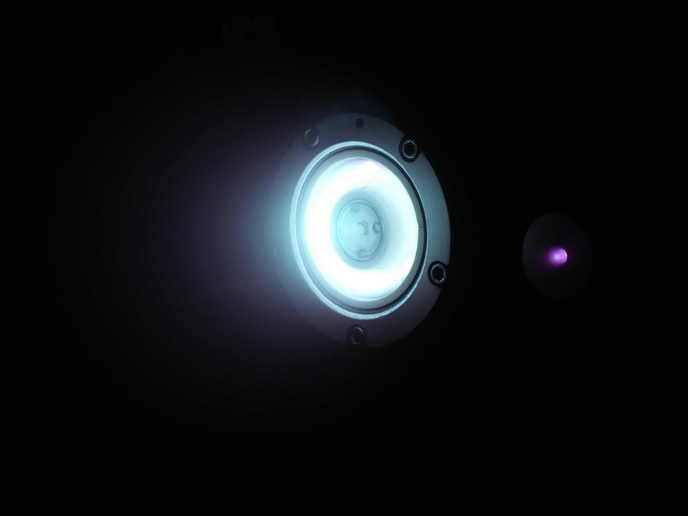C12A7:e- in cathodes and neutralisers improves electric propulsion
In recent years, electric propulsion (EP) systems have gained tremendous traction over chemical ones for low Earth orbit (LEO) missions. LEO satellites are subject to orbital decay – a gradual decrease in their distance from Earth. As a result, they need efficient low-thrust propulsion systems for ‘station keeping’. Smaller satellites also need less bulky and lighter components. Electric propulsion checks both boxes. However, main challenges arise from the fact that state-of-the-art EP systems use scarce and expensive materials for their cathodes and propellants. The EU-funded NEMESIS project addresses both issues with a disruptive cathode material that can be produced cost-effectively in Europe from inexpensive, locally available and abundant precursors.
C12A7:e- as an alternative electron emitter
Cathode materials serve two purposes. They provide electrons to bombard propellant gases, to produce positive ions that are accelerated and ejected to push the vehicle forward. Then, as this process charges the vehicle positively, additional electrons are required to neutralise the positive charge. “Most electric propulsion cathodes and neutralisers currently use lanthanum hexaboride (LaB6) as the electron emitter and xenon as the propellant gas. Both lanthanum and xenon are scarce and expensive – issues, which have both exacerbated by the war in Ukraine,” explains Ángel Post of Advanced Thermal Devices and NEMESIS project coordinator. NEMESIS targeted a novel ceramic material, C12A7:e-, that is not only inexpensive and abundant but requires a lower temperature to begin emitting. This means a lower energy requirement and less induced thermal stress to the rest of the satellite components and subsystems. The researchers expected it to be more chemically inert than LaB6, allowing operation with other propellant gases.
Pulsed polarisation solves electron generation instabilities
The consortium confirmed all expected benefits and exceeded them. The operational temperature was reduced to about 200-250 °C from 800-1300 °C for alternative electron emitters. This eliminates the need for an external heat source, expensive heat-resistant materials in subsystems and thermal radiation shields. Researchers demonstrated operational compatibility with many alternative propellant gases including argon, krypton and even ammonia, in addition to conventional xenon. NEMESIS operated novel cathodes over thousands of hours in total, with consistent and repeatable results in multiple labs. Importantly, “we overcame the most difficult issue with C12A7:e-, namely sparks and instabilities caused by charge accumulation at the thin dielectric layer on the material’s surface that cause malfunction and even melting. Our solution – charge coupling techniques through pulsed polarisation of the material – has been patented,” notes Post. Furthermore, pulsed polarisation provided twice as much emitted current, and allowed the consortium to start electron emission at temperatures even lower than reported in the literature. Several prototypes have been developed and successfully tested using xenon, argon, krypton, iodine and ammonia propellants. These were successfully coupled with commercial Hall-effect thrusters (HET) and achieved high performance figures of merit.
European independence in cost-effective satellite propulsion
NEMESIS raised awareness within the European space industry via 24 presentations at nine international conferences and workshops as well as eight peer-reviewed publications, fostering early adoption and competitiveness. Three follow-on projects have been awarded since project completion and two industrial collaboration agreements have been signed. Europe is on the road to provide its booming small satellite market with cost-effective, low-energy, high-performance electric propulsion, enhancing competitiveness in a growing global market.
Keywords
NEMESIS, propulsion, electric propulsion, satellite, propellant, cathodes, electron emitter, pulsed polarisation, ceramic, LEO, low Earth orbit



